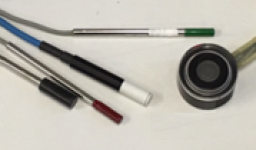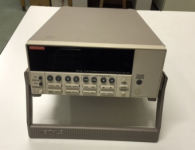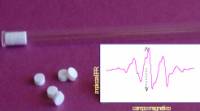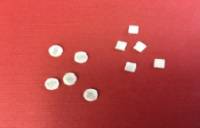Table of Contents
EPR Area
Other instrumental resources
Immuno-spin trapping
The increase of “Oxidant Reactive Species” (ROS) produced under conditions of oxidative stress can induce reversible/irreversible damage in the target molecules through the formation of radical intermediates centered on the target molecules. However, many of these radicals have a short half-life and their monitoring becomes problematic with both direct EPR and spin trapping technique.
The latter, in fact, despite being based on the formation of the link between spin trap and radicalized molecule, presents the limit of transformation of adducts, by the intracellular reducing agents, in species EPR silent, notwithstanding the covalent bond guarantees the presence of the adduct. The Immuno-Spin Trapping (IST) technique enhances the presence of these adducts in the oxidized macromolecule (mainly proteins and nucleic acids), and combines the specificity of spin trapping with the sensitivity of immunological techniques based on antigen/antibody reactions. The formation of these adducts, evidence of the radicalized molecule, is detectable with ELISA assays, western blotting, immunohistochemistry, and MS. IST is useful for:
- the identification of radicalized macromolecules and, in the case of proteins, of the amino acid residues involved;
- the study of the mechanisms of oxidation and alteration of intracellular signaling;
- the study of the intracellular distribution of the radicalized macromolecules and their relations with the other macromolecules.
Contact: Donatella Pietraforte
☎ +39 06 4990 2907
Stimulated Luminescence instrumentation
Thermoluminescence reader
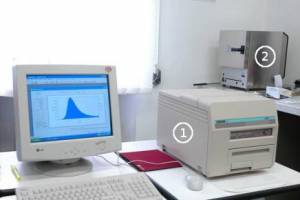
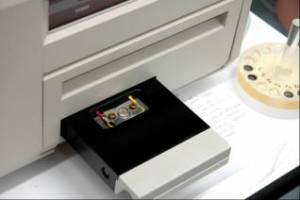 Thermoluminescence reader Harshaw, mod. 3500 equipped with software WinREMS for data acquisition and analysis. Thermal cycles up to 600°C (with an uncertainty of +/-1%) with different heating rates, including isothermal decays. Laboratory oven specially designed for TL dosimetry. Run by a microprocessor, it allows heating of the sample at controlled temperatures. Different heating cycles available by the dedicated software.
Thermoluminescence reader Harshaw, mod. 3500 equipped with software WinREMS for data acquisition and analysis. Thermal cycles up to 600°C (with an uncertainty of +/-1%) with different heating rates, including isothermal decays. Laboratory oven specially designed for TL dosimetry. Run by a microprocessor, it allows heating of the sample at controlled temperatures. Different heating cycles available by the dedicated software.
Optically stimulated luminescence reader
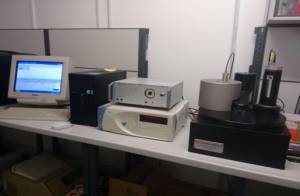 OSL/TL reader Risø DA-20 (DTU Nutech, Danimarca) equipped with a carousel loading up to 48 samples placed on steel plates of about 10mm in diameter and 0.25mm in thickness. Managed by a dedicated software that allows to set OSL and TL measurements in sequence. The optical stimulation system consists of infrared and visible LEDs; currently it allows stimulation with blue light (470 ± 30nm, with a maximum power of 36mW/cm² in the sample position). The heating system for thermal stimulation allows reaching the maximum temperature of 700°C. Different optical filters are available to select the frequency range of the emitted luminescence. Housing for a radioactive source (90Sr/90Y or 241Am) available for sample calibration.
OSL/TL reader Risø DA-20 (DTU Nutech, Danimarca) equipped with a carousel loading up to 48 samples placed on steel plates of about 10mm in diameter and 0.25mm in thickness. Managed by a dedicated software that allows to set OSL and TL measurements in sequence. The optical stimulation system consists of infrared and visible LEDs; currently it allows stimulation with blue light (470 ± 30nm, with a maximum power of 36mW/cm² in the sample position). The heating system for thermal stimulation allows reaching the maximum temperature of 700°C. Different optical filters are available to select the frequency range of the emitted luminescence. Housing for a radioactive source (90Sr/90Y or 241Am) available for sample calibration.
Pulsed Photostimulated Luminescence (PPSL)
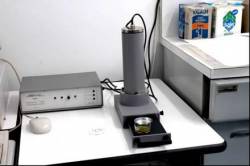
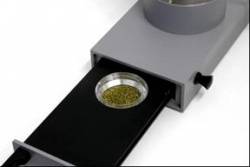 Made by the Scottish Universities Environmental Research Centre (SUERC, Glasgow Scotland) for analysis on irradiated foods. The instrument can be connected to a computer and managed by appropriate software. Equipped with a stimulation system of infrared LEDs. Stimulation occurs by pulses: the duration of the single pulse and the number of pulses can be adjusted by the instrument management software.
Made by the Scottish Universities Environmental Research Centre (SUERC, Glasgow Scotland) for analysis on irradiated foods. The instrument can be connected to a computer and managed by appropriate software. Equipped with a stimulation system of infrared LEDs. Stimulation occurs by pulses: the duration of the single pulse and the number of pulses can be adjusted by the instrument management software.
About the phenomena of Stimulated Luminescence
Dosimetric systems
Active dosimeters
- Markus ionization chamber type N23343 (PTW)
- Silicon diode detector for proton beams type DZA192 (Scanditronix)
- Silicon diode detector for stereotactic photon beams type DEB050 (Scanditronix)
- Diamond detector type 60003 (PTW)
- microDiamond detector type 60019 (PTW)
- Electrometer model 6517A (Keithley)
Passive dosimeters
Alanine/EPR dosimetry system
Thermoluminescence dosimeters (TLD)
Radiochromic film dosimeters
Phantoms
Surface Plasmon Resonance (SPR - Biacore)
The Surface Plasmon Resonance (SPR) technique allows studying the interactions between a ligand and putative substates anchored onto a gold-chip, in a pM range of the bulk, with a very high sensibility (few pg/mm²). [...read more]
